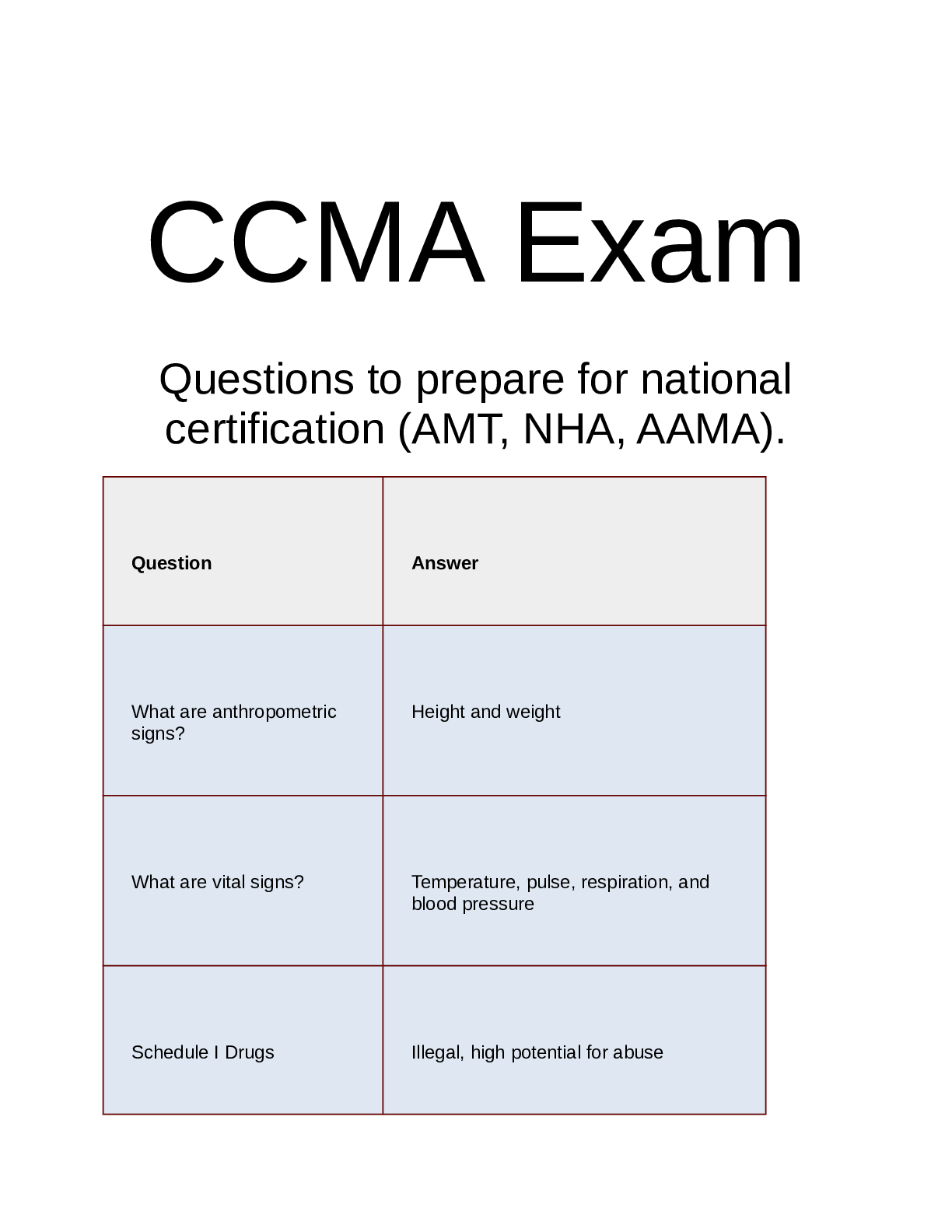Mathematics > EXAM REVIEW > Final Exam Review - University of Kansas MATH 126 (All)
Final Exam Review - University of Kansas MATH 126
Document Content and Description Below
Final Exam - Review MATH 126 - Spring 2017 Sections 6.1-6.5, 7.1-7.3, 7.5, 7.7, 8.1, 8.4, 10.1-10.7, 11.1-11.4, 12.1-12.5 Final Exam: Tuesday 5/9, 4:30-7:00pm The following is a list of important ... concepts from the sections which were not covered by Midterm Exam 1 or 2. This is not a complete list of the material that you should know for the course, but it is a good indication of what will be emphasized on the exam. A thorough understanding of all of the following concepts will help you perform well on the exam. Some places to find problems on these topics are the following: in the book, in the slides, in the homework, on quizzes, and WebAssign. • Vector and 3-Dimension Basics: Sections 12.1-12.4 You should be familiar with the basics of the 3-Dimensional Cartesian Coordinates and the basics of vectors. A vector~r can be described using component notation ha,b, ci or standard basis notation a~i+ b~j +c~k. A vector has a magnitude, its length, |~r| = √ a 2 +b 2 +c 2 . Suppose that ~v = ha1,a2,a3i and ~u = hb1,b2,b3i; let c be a scalar. We have four operations involving vectors and scalars. (i) Scalar Multiplication: A scalar multiplied with a vector resulting in a vector. Scalar multiplication changes the magnitude of a vector, not it’s direction. c~v = hca1, ca2, ca3i (ii) Vector Addition: Two vectors are added to create a vector. Visually, vectors are added through the Parallelogram or Triangle Law. ~v+~u = ha1 +b1,a2 +b2,a3 +b3i (iii) Dot Product: Two vectors are multiplied to create a scalar. Work is an example of the dot product. If θ is the angle between ~u and~v, then ~u ·~v = |~u||~v| cos(θ) = a1b1 +a2b2 +a3b3 (iv) Cross Product: Two vectors are multiplied to create a vector. v ~×u is orthogonal to both ~u and ~v. Torque is an example of the cross product. The determinant of a 2×2 matrix is a b c d = ad −bc, this observation is used in computing the cross product ~v×~u = ~i ~j ~k a1 a2 a3 b1 b2 b3 = a2 a3 b2 b3 ,− a1 a3 b1 b3 , a1 a2 b1 b2 The projection of~v onto ~u is the vector proj~u (~v) = ~v ·~u |~u| 2 ! ~u. You should be familiar with the facts and identities of the four operations. For example (and there are many more) – ~v ·~v = |~v| 2 – ~v ⊥~u if and only if~v ·~u = 0. – The parallelogram formed by ~u and~v has area |~u [Show More]
Last updated: 2 years ago
Preview 1 out of 3 pages
.png)
Buy this document to get the full access instantly
Instant Download Access after purchase
Buy NowInstant download
We Accept:

Reviews( 0 )
$5.00
Can't find what you want? Try our AI powered Search
Document information
Connected school, study & course
About the document
Uploaded On
Dec 12, 2022
Number of pages
3
Written in
Additional information
This document has been written for:
Uploaded
Dec 12, 2022
Downloads
0
Views
94












